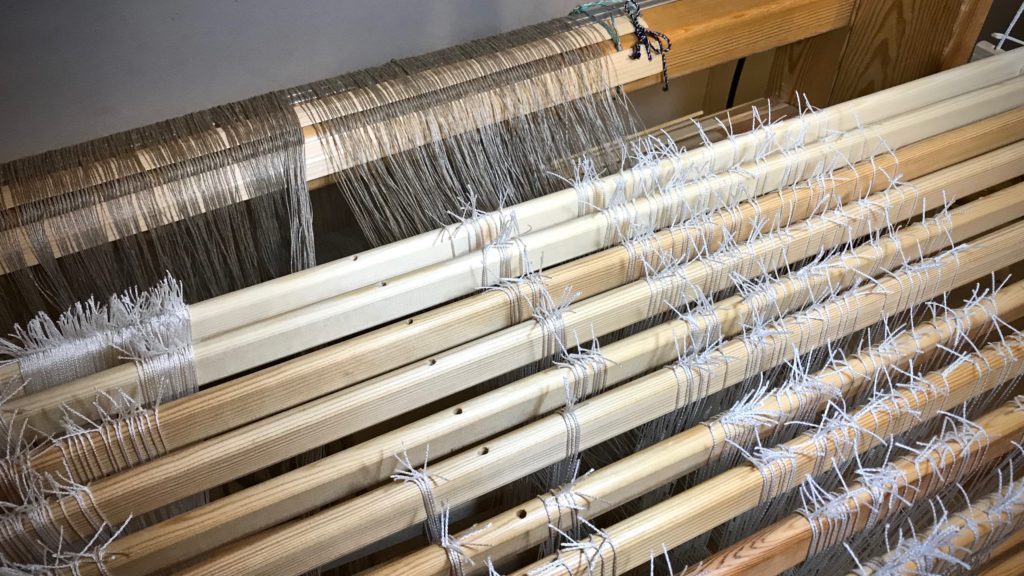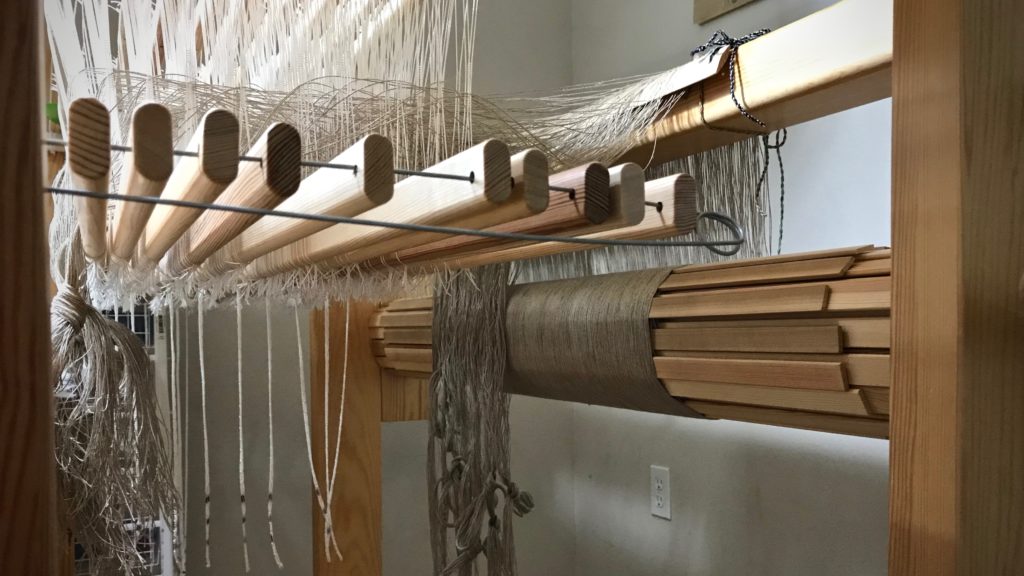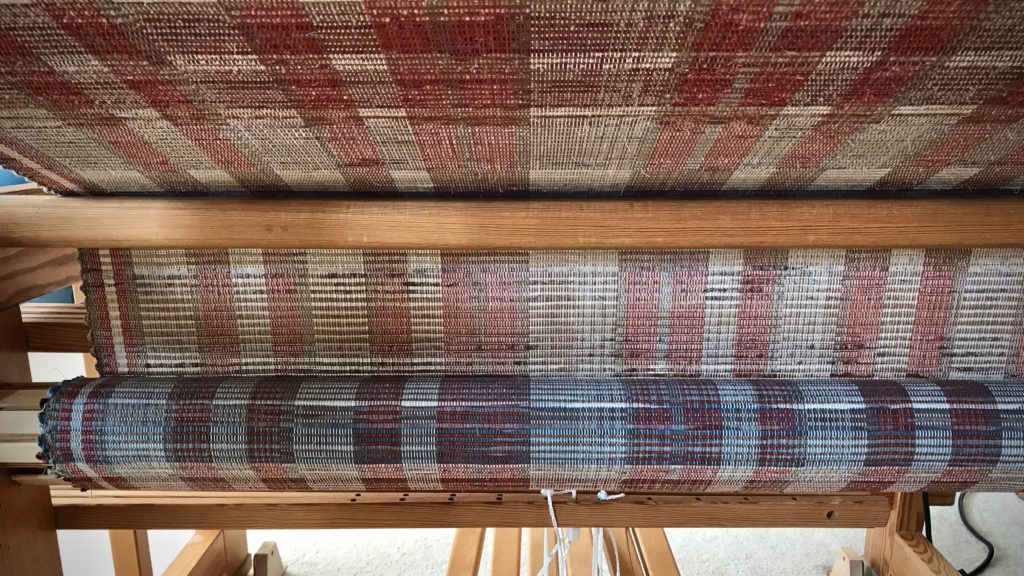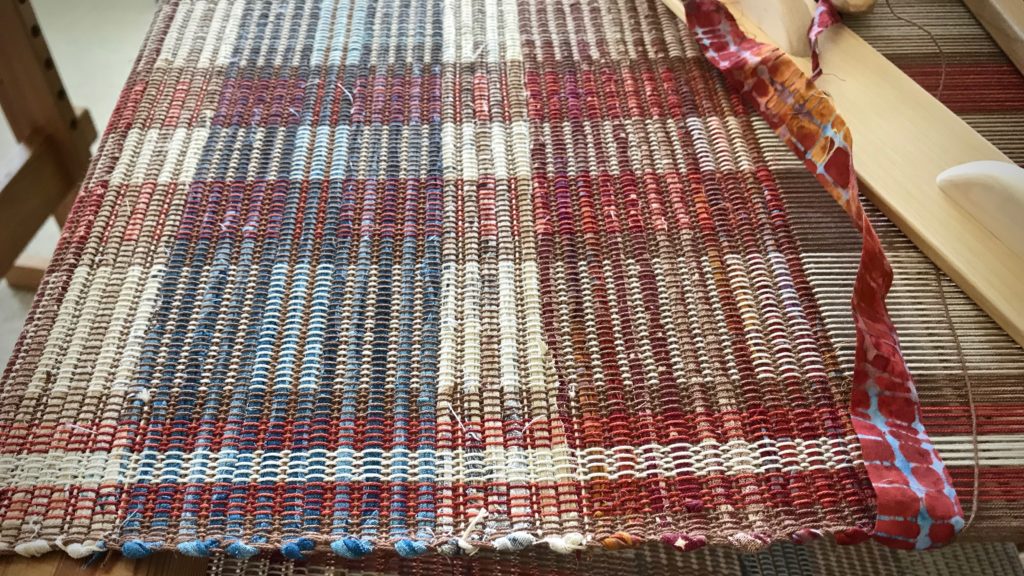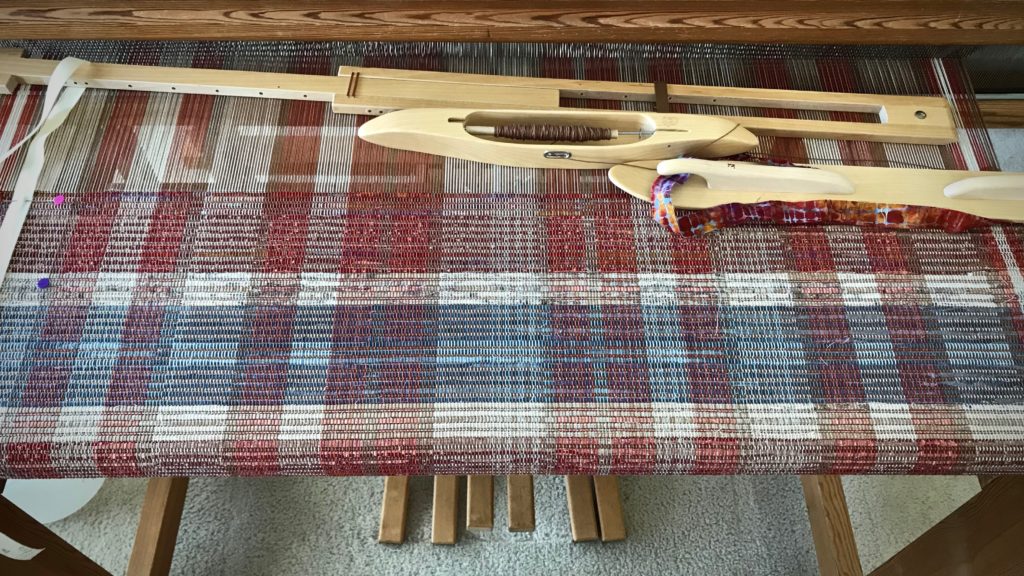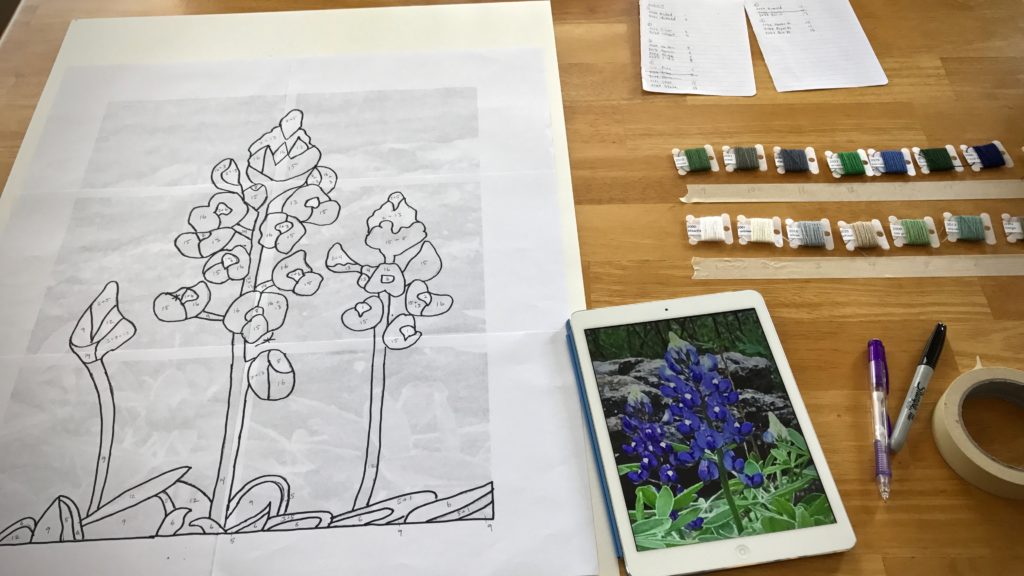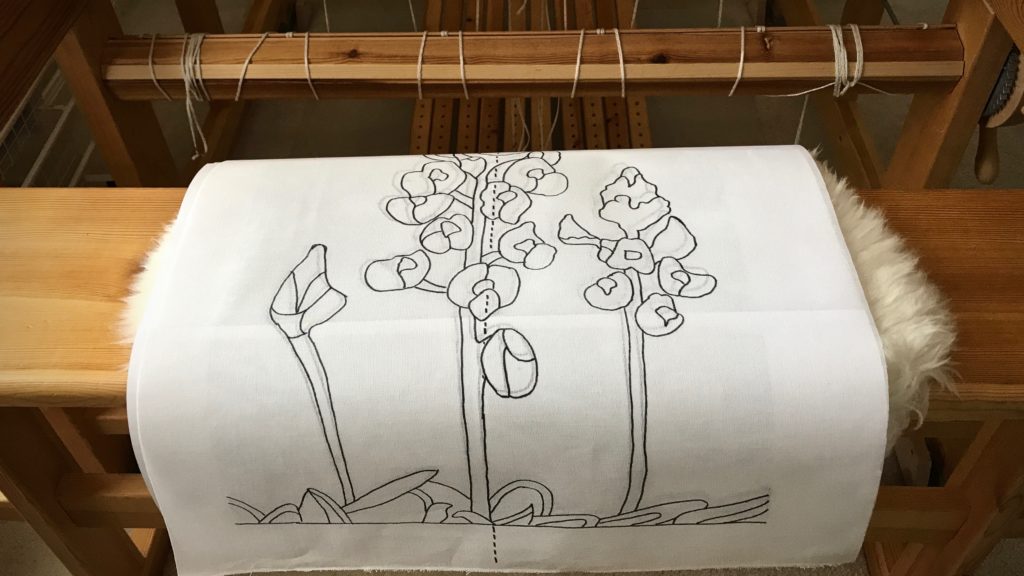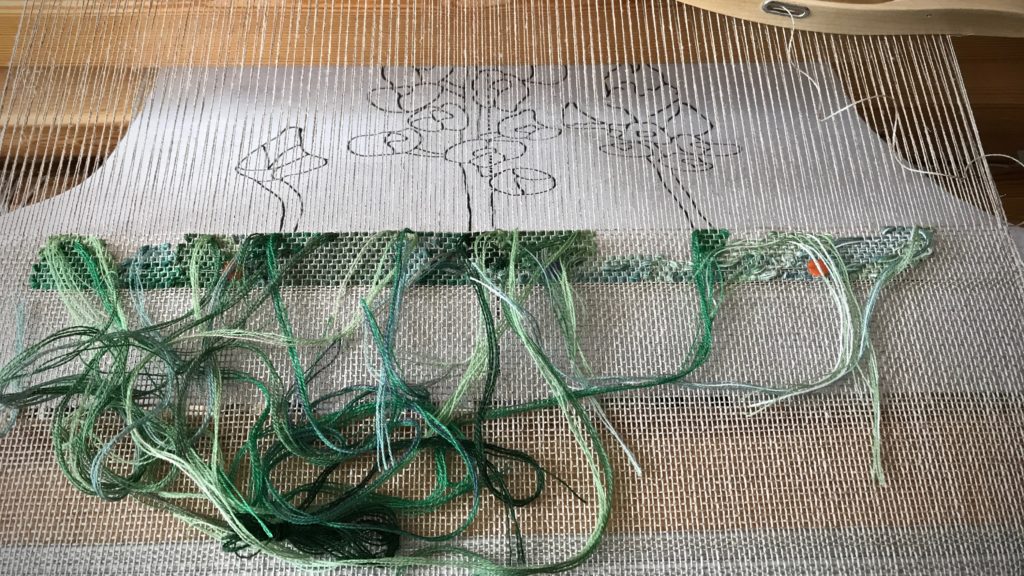What if you finish tying up the loom, eight shafts and eight treadles, having beamed, threaded, and sleyed 2,064 ends, and the first thing you see when you step on the treadles is… that you misunderstood the threading draft? Do you undo everything and re-thread? Not likely, if it took you eleven-and-a-half hours to do the threading in the first place. I am taking a deep breath. Time to walk away and think. Maybe I can adjust the tie-up, or maybe I can use it as is—a serendipitous design. Should I laugh or cry? My idea to serve my loved ones with handwoven gifts (See Weaving a Gift) is getting off to a rough start.
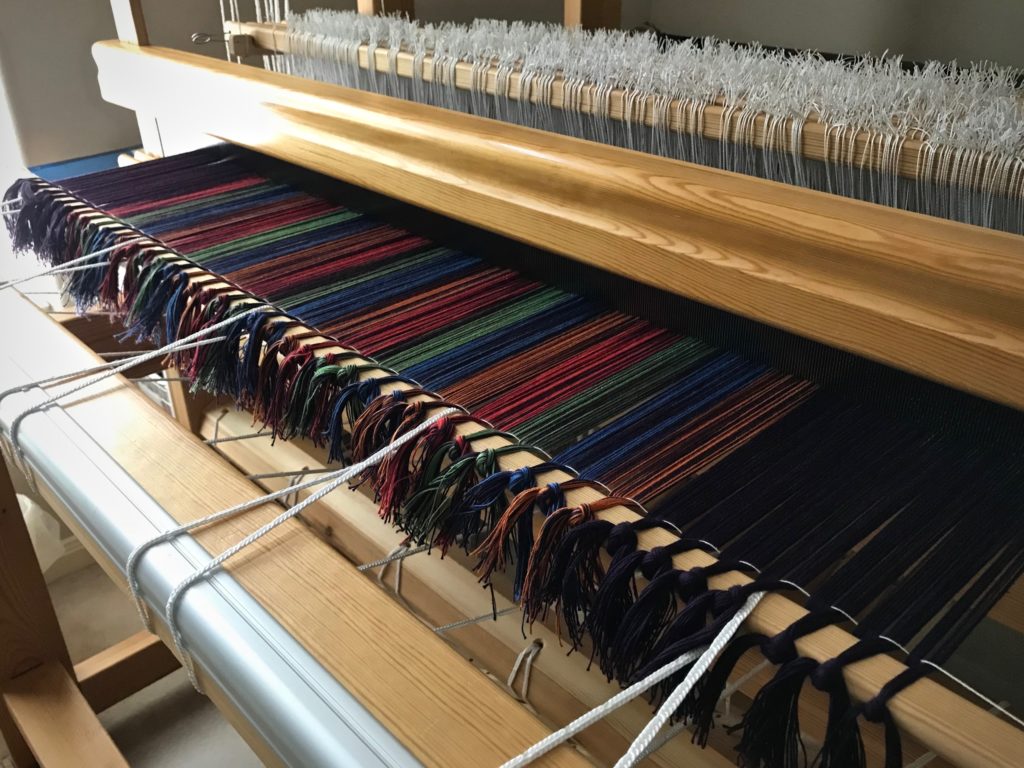
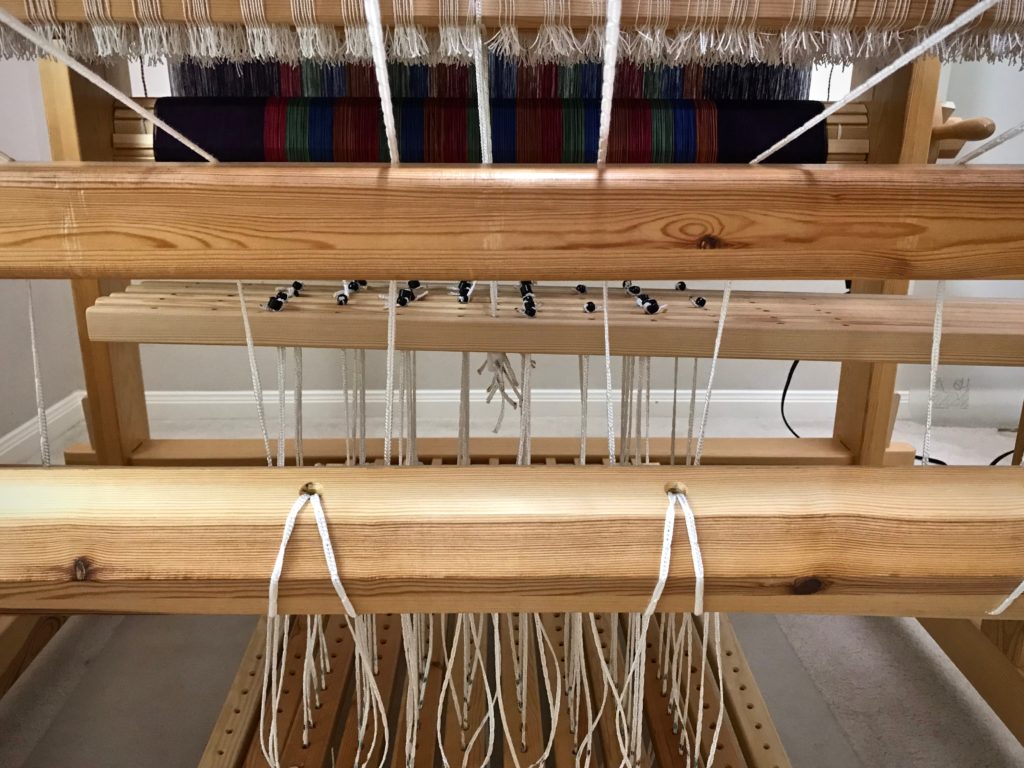
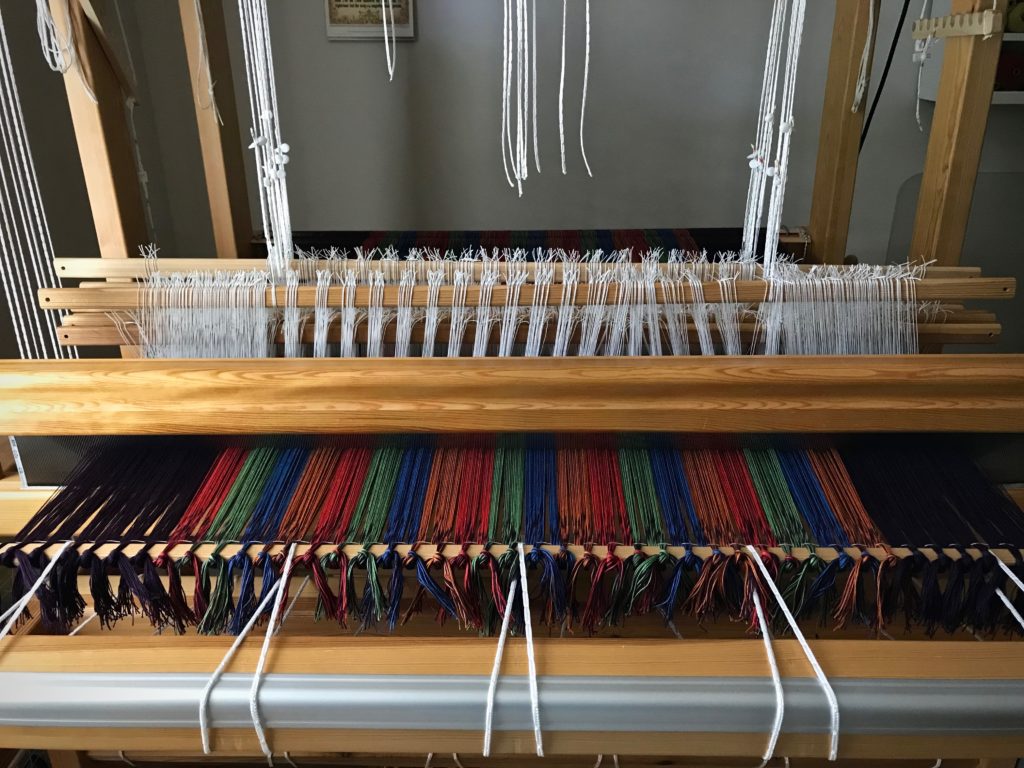
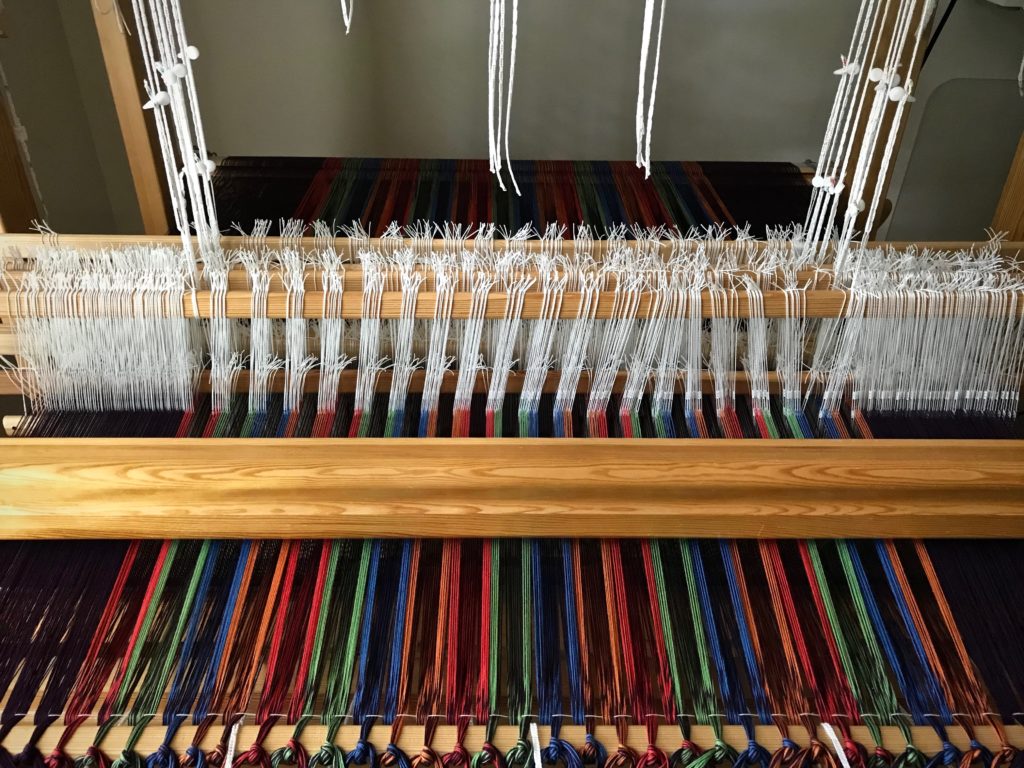
Serve. I want to offer my best, especially when I’m making a gift for someone dear to me. It helps to look beyond the person, though, and realize my true service is to the Lord. Heart, soul, mind, and hands. I bring my misunderstandings and missteps of the heart to my Master Weaver, who has taken it on himself to make things right. And I’m reminded that as I serve someone with my weaving hands, the true gift is love. This double weave throw will be a reminder of that.
May you recover from your mistakes.
Humbly,
Karen
UPDATE: I have had a chance to put the draft on Fiberworks weaving software and work with it to adjust the tie-up. I think I found a solution. Stay tuned!

